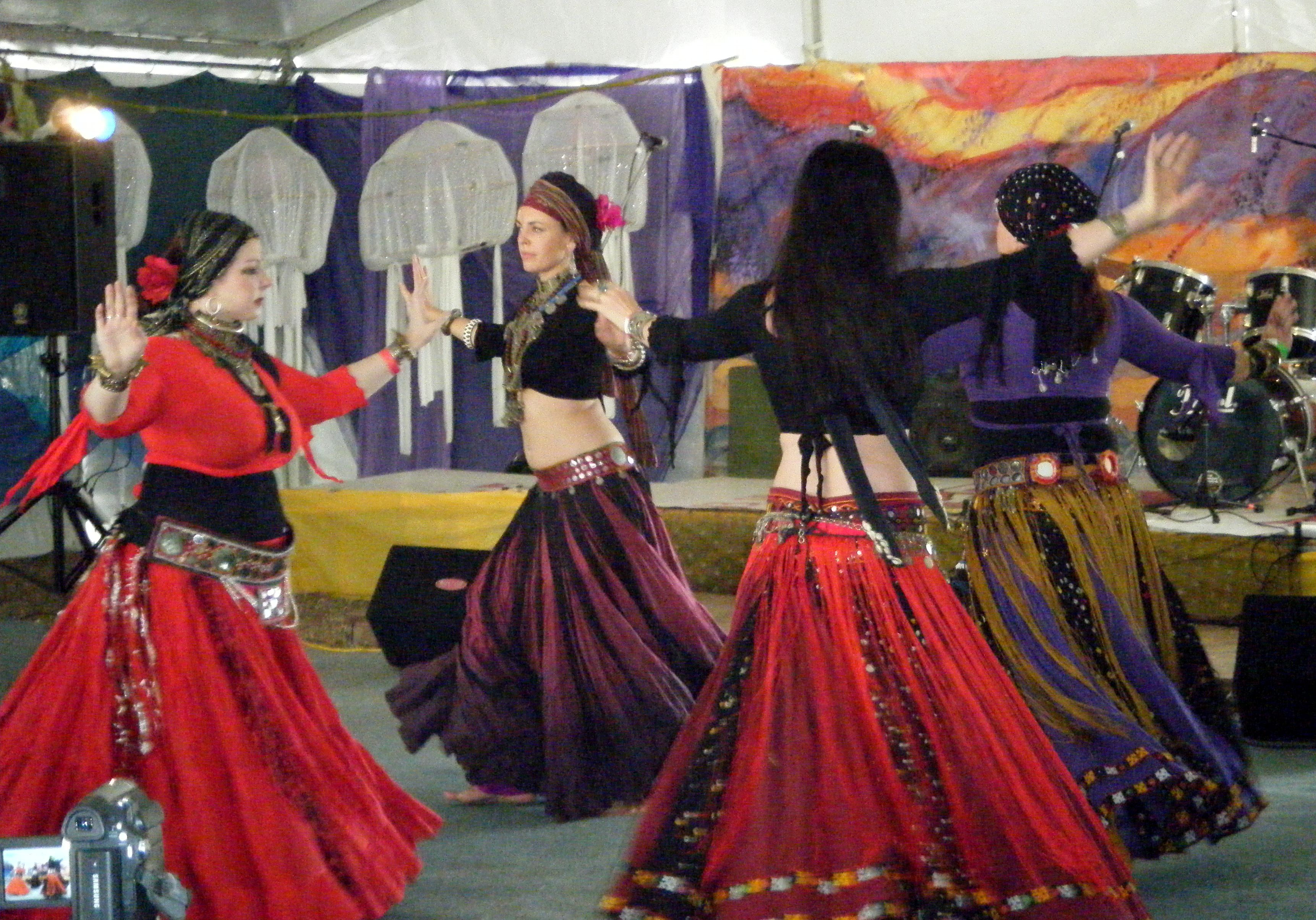|
|
 |
|
Evolution...
Tribal style bellydance evolved as a distinct and unique mixture
of dance styles in the 1980s, the troupe Fat Chance Belly Dance pioneering what became known as
American Tribal Style Bellydance (or ATS). FatChance (see Links page) used an improvisational format based on a fixed movement
vocabulary - all dancers knowing the same moves, then sharing leadership of the troupe, making up the dance as they go.
Tribal = dancing as a group
This format was so successful (and so much fun!) that different
dance "tribes" all over the world now create their own movement vocabulary, specific to their tribe, but can still meet other
tribal dancers from anywhere on Earth and instantly share a dance.
Gypsy Caravan (see Links page), lead by Paulette-Rees Denis, has a huge library of unique
moves and staging methods that have an enormous influence on La Rossa's tribal style. The fire and punch of GC moves,
and Paulette's insistence that each dancer has something special to share with the tribe is the backbone of La Rossa's tribal
teaching.
Tribal bellydance uses the rhythms and dance moves from traditional
dances of the Middle East and North Africa and combines them with posture reminiscent of flamenco
dance, with a touch of spice from any and all of the countries along the Silk Road - Europe to Africa to the Middle East,
Persia, India, South-East Asia and beyond. Similarly, the women's tribal-style costume
tends towards a combination of the commonalities of folk-wear from those many and varied cultures - big skirts,
colourful aprons, modest (by today's standards!) shirts and cholis, natural fabrics. Jewellery, face markings and
other adornments are chosen to enhance the "old-ness" of the costume.
La Rossa was created for sharing Tribal Bellydance with Central
Queensland - a weekly meeting place for women to explore this exciting form of improvised group bellydance. Hips
are used for the beat, chest and arms are high and strong. The improvisational format requires dancers to concentrate
on what their fellow dancers are doing, using body position and eye contact to communicate different dance "ideas" to each
other.
The overall effect is of strong bodies,
powerful concentration, energy, spontaneity and beautiful, unified movement.

|
 |
|
We are a choir, with different voices, but singing the same song
A tribe can become more than a dance troupe - in particular, tribal bellydance
fosters communal thinking, a concentration of all
members' thoughts on a single movement, or moment, or beat. Often this is called the tribal "attitude" - Tribal
attitude adds intense moments even in the middle of a lively, happy dance. It's effect on movement is profound,
and differentiates "tribal" bellydance from other dances in the Middle Eastern dance genre.
DANCE WITH YOUR TRIBE
The strength of a tribal performance comes from unity,
thinking as one, moving as one, concentrating on the same move in the same time. For the purpose of unity, we learn
the same movements, in the same timing, in very similar costumes.
Each tribe has it's own accents whilst using "standard" ATS moves, and
perhaps even some signature moves - their own "dialect", but still within the tribal vocabulary. Although there are
as many different tribal dances as there are tribes, the posture, basic movement vocabulary, and even
costume defines a dance as "tribal", and makes it possible for different troupes to share the dance. All come
from the tribal philosophy of unity in dance.
And don't forget that tribal attitude - we dance together, in harmony,
as one.
|
 |
|
|
 |
|
|
 |
|
|
|
|
There's heaps of information on tribal bellydance,
tribal fusion and related styles all over the internet - why not start at my Links page?
La Rossa Tribal Bellydance ~ Rockhampton, QLD, Australia
|
|
|
 |

